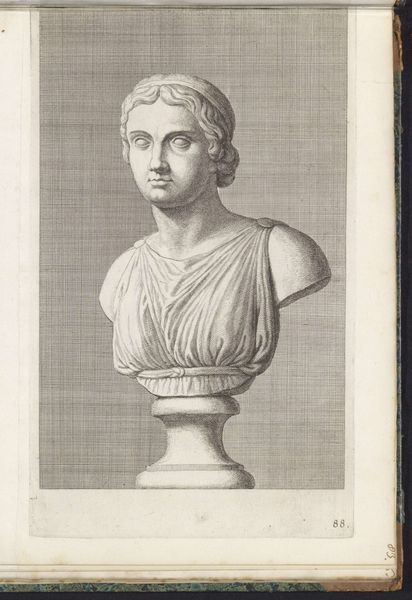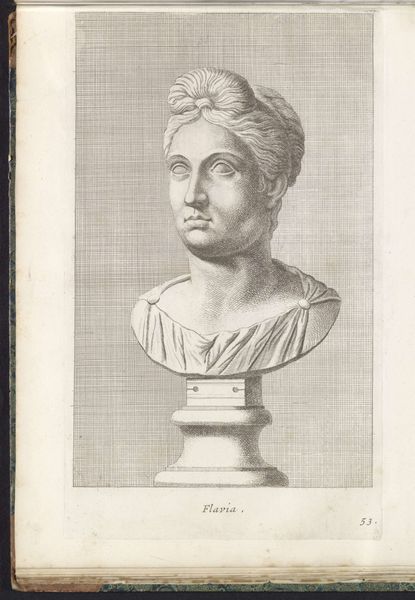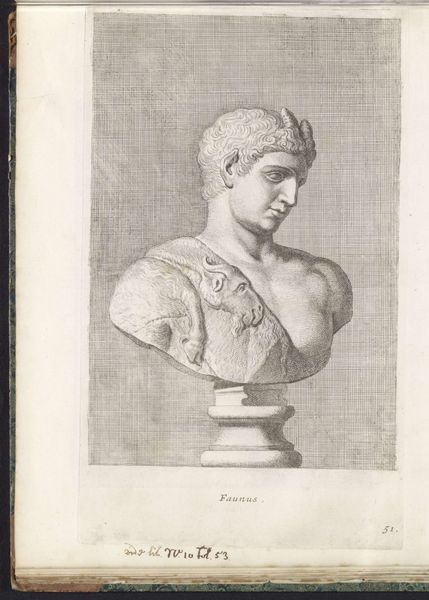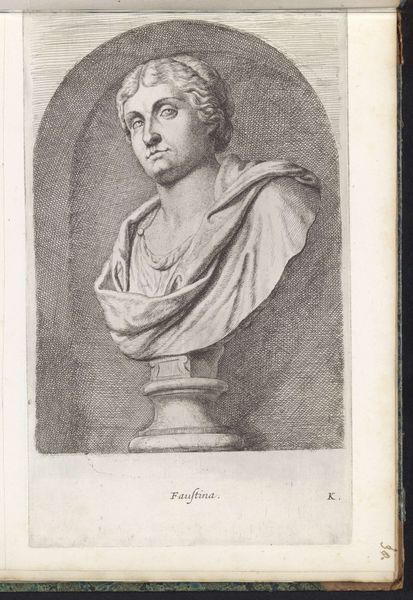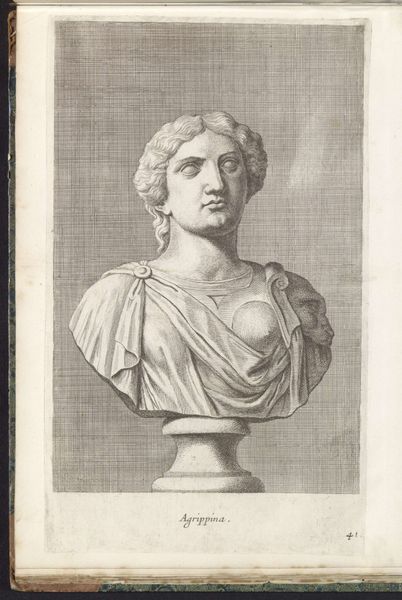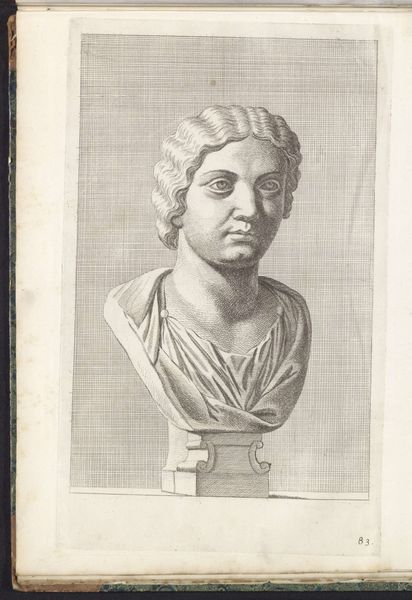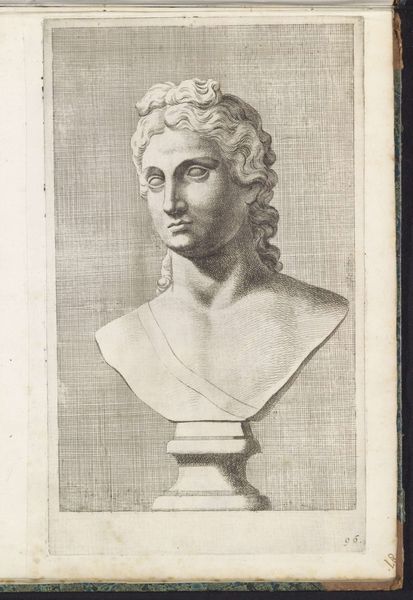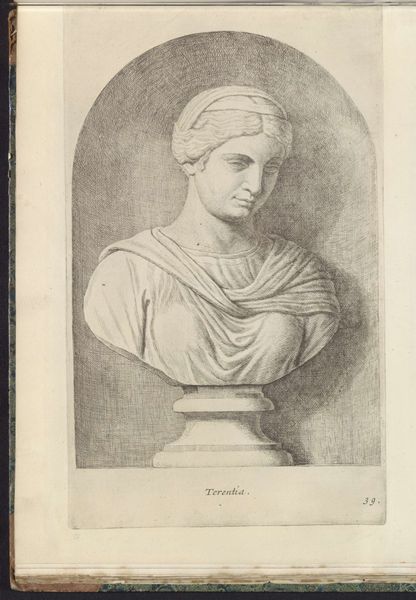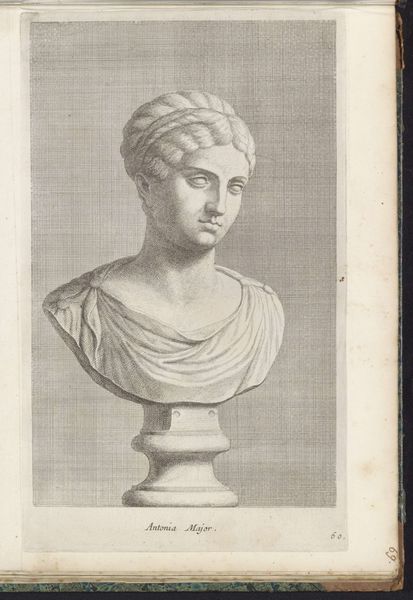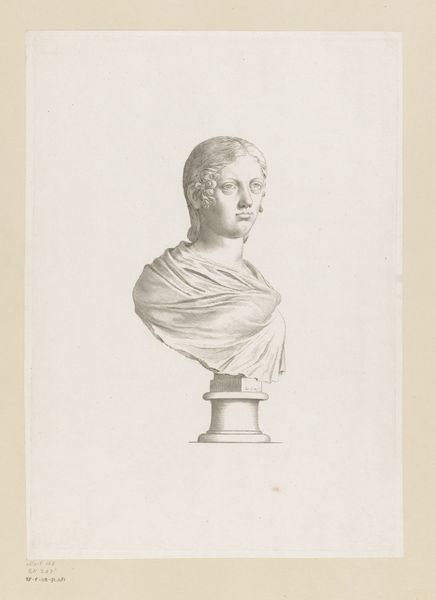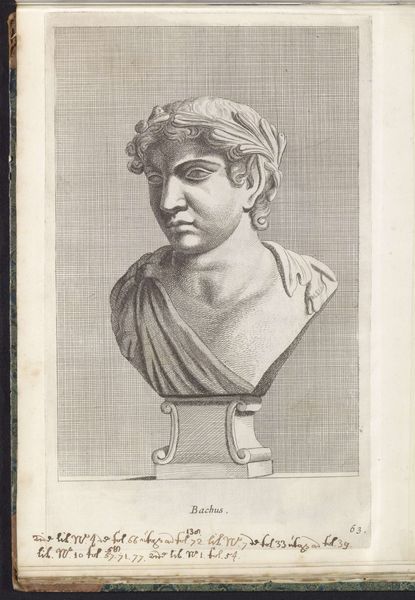
print, engraving
#
portrait
# print
#
classicism
#
ancient-mediterranean
#
history-painting
#
engraving
Dimensions: height 325 mm, width 199 mm
Copyright: Rijks Museum: Open Domain
Editor: This is a print by Hubert Quellinus, titled "Buste van Faustina," made sometime between 1646 and 1670. It's an engraving, so very linear and precise. What stands out to me is how it evokes a sense of idealized Roman womanhood, yet the medium, being a print, seems to democratize this image. What’s your interpretation of this piece? Curator: You've hit on something important. The print is not just about representing Faustina, but also about how the image of classical antiquity circulated and was consumed in the 17th century. Consider the social context. Prints made these images accessible to a wider audience than marble busts displayed in aristocratic collections. How does that shift in accessibility change the *meaning* of "Faustina?" Editor: I guess making the image of Faustina accessible changed her meaning. What did the general population know about Faustina and how would they contextualize an image of her in their homes? Curator: Precisely! Was she just an image of beauty or status, or did her story as Empress resonate? The printing press and the rise of a merchant class both altered access and interpretation of historical and classical subjects. This also begs a wider point about the function of art at that time. Do you have thoughts on that question? Editor: I see. So, this image exists not just as art, but as a piece of social commentary on class and the perception of art itself. The print democratizes the image of wealth. Now I want to know more about the prints as democratizing mechanism for wealth perception in the 17th century. Curator: Exactly! That opens up fascinating avenues to consider. It moves beyond a simple appreciation of beauty to a deeper understanding of how images function within a social and political landscape.
Comments
No comments
Be the first to comment and join the conversation on the ultimate creative platform.

